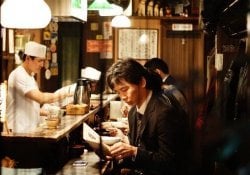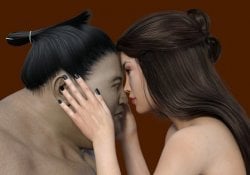Unsurprisingly, the Japanese are masters of creativity. But they don't know the limit in creativity when it comes to creating TV commercials. The commercials in Japanese are called Komeesharu [コマーシャル] and today you will see some.
This article is a complete survey of Japanese commercials, if you are in this article just to see the funny videos, they are at the end of the article. You can use the summary below to jump to that part.
Índice de Conteúdo
Why are Japanese commercials so weird?
Throughout this article you will understand the answer to this question. Of course, there are many factors that make Japanese commercials seem strange to Western eyes, such as the use of generic special effects that were heavily influenced by Tokusatsu.
Read also: Japanese Heroes Guide - Where to Watch Tokusatsu Online?
Another main factor is the different culture, Japanese people think differently from Westerners, so a lot of things that don't make sense to Westerners make sense to Japanese people. Another factor is in the rules and culture of Japanese commercials.
In this article you will see that the Japanese have a very short time for commercials, and that they are not used to talking about the product or displaying its price. They need, through the unconscious, to make the viewer like the commercial to like the product.
Kawaii Culture also has a great influence on these commercials. The Japanese are used to using cute things like bears, cartoons and fictional characters that constantly appear in Japanese commercials.
Read also: The Best Kawaii Coloring Pages
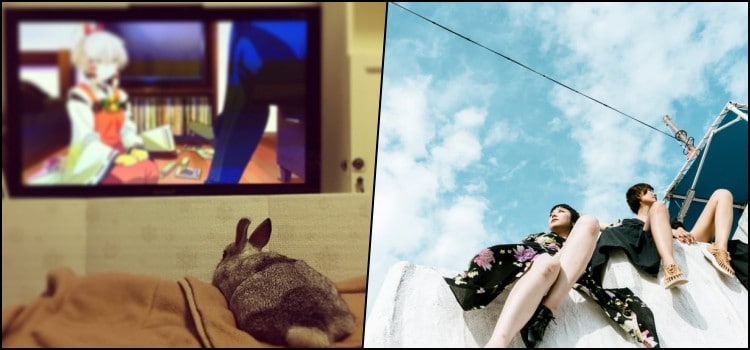
What are Japanese commercials like?
In Japanese commercials, they only have 15 to 20 seconds to call attention to a certain product or brand, and many of these commercials are culturally different from ours. So it is difficult to understand the purpose of these commercials.
The commercials are full of moe, kawaii, strange lines, bizarre attitudes and actions, apart from the clothes, sets, and everything that appears that makes Japanese commercials unique and fun.
We recommend reading: Moe moe kyun – What is the origin and meaning of moe?
Some can be exciting, others interesting and of course, most can cause a question about “What the heck is this?”… Other than that you still have the opportunity to see the bizarre Japanese products.
The Commercial Broadcasting Association has established that the time standard for commercials is 5 seconds, 10 seconds, 15 seconds, 20 seconds, 30 seconds and 60 seconds in Article 151 of the Broadcasting Standard.
For TV commercials, spot commercials are sold in 15-second units and timed commercials are sold in 30-second units (with a few exceptions). CMs produced in 60 seconds are often seen on the internet.
Movies, series and anime usually receive a PV of 15 seconds in addition to a trailer. Usually a theme song can be attached to this type of video. Japanese commercials tend to focus more on the content of the commercial than the product.

The history of Japanese TV commercials
O primeiro comercial de TV japonês foi para a Seiko, uma empresa de relógios. O comercial foi transmitido como uma espécie de previsão de tempo na NTV. Durante estes quarenta anos, inúmeros comerciais de TV foram para o ar;
Most of them soon became outdated and forgotten and some of them were nostalgically remembered as a mirror to the past. For the first twenty years, Japanese TV commercials gave viewers the “dream” of a modernized lifestyle.
Consumer goods like Western appliances, cars, medicines and food – things that help people modernize and simplify their lives – were passed along continuously until the products' names could be the subject of a small conversation over tea.
For Japanese TV commercials, the 1970s were the decade of evolution. The role of TV commercials became not only to inform people about new products, but also to stimulate the desire to buy them.
Through various advertising tactics, companies encouraged us to buy their products or services, making us more judicious in our selection. TV commercials often grab our attention even before they advertise the product.
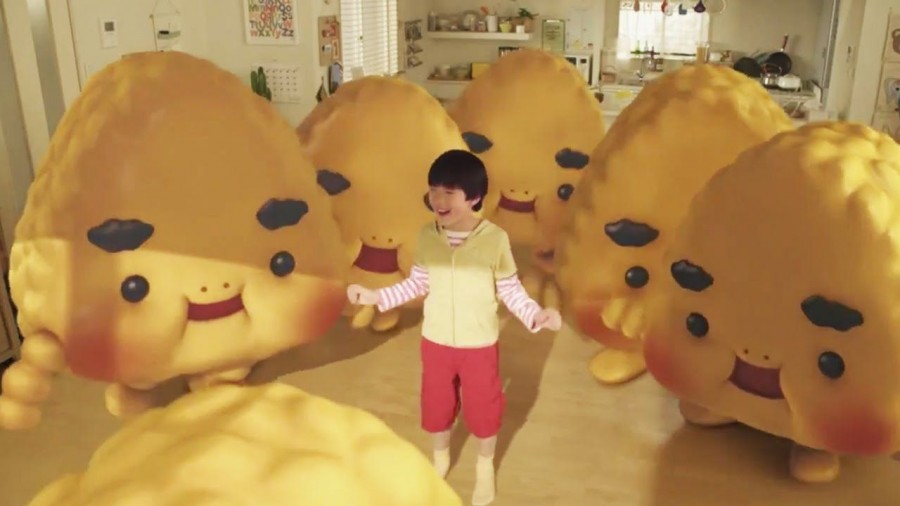
The article is still halfway through, but we recommend also reading:
Japanese commercial rules
Perhaps one of the reasons Japanese commercials are so bizarre and strange is because of the rules they have to follow. Such rules leave them with their hands tied, causing them to resort to strange tactics to get the viewer's attention.
See too: Is Japan Really Bizarre and Strange?
Here are the main rules of Japanese TV commercials:
- O CM não deve usar expressões que neguem uma sociedade ou estilo de vida saudável (Artigo 91);
- O CM deve de alguma forma esclarecer que se trata de um comercial (Artigo 92);
- Não use expressões que possam levar à violação da livre concorrência (Artigo 97);
- Você não deve exagerar os fatos e deixar seus espectadores superestimarem (Artigo 100);
- When voicing an impossible scene in real life, the text "(This is a CM production)" is displayed on the screen;
- A message is displayed on the screen when the product is different from the advertised one;
- A CM não deve usar testemunhos falsos sobre o produto ou testemunhos cuja fonte não seja clara (Artigo 102);
- Don't unfairly use the show's main character's sense of trust;
- Não descreva atos perigosos que possam ser imitados;
Because of these rules, tire commercials use European cars instead of Japanese ones. Beverage commercials need to say things like after drinking, throw the empty container for recycling and stuff like that.
In perfume or fabric softener commercials, a statement says: “There are individual differences in how you smell. Please consider the people around you before using.” Children's commercials must be declared as such.
There are super strict and specific rules for pharmaceutical commercials. Doctors and pharmacists cannot recommend drugs in commercials. Pharmaceutical products must not be presented as prizes within others.
Of course, there are many other rules, because we only cite about 8 articles among hundreds of them. Some may be suggestions, others absolute rules. Some articles are specific to radio commercials and other advertising spaces.

Differences between Japanese and Western TV Commercials
What are the differences between Japanese and Western television commercials? Akiyama has done research on this subject for ten years. Despite being an old survey, I believe the main points listed below haven't changed a bit.
western commercials
In the western commercials Akiyama listed some features which are:
- Uso agressivo da línguagem;
- Grande quantidade de palavras na tela da TV;
- Leitura das palavras na tela;
- Repetition;
- Exibição freqüente do preço;
- Common use of dramatizations such as "based on a true story";
- Music - such as jingles, background music and songs;
- Uso freqüente de anúncios comparativos ou desafiadores;
- Close relationship between the ad concept and the product or service;
- Variação na duração dos comerciais: a maioria é de 60 segundos ou 30 segundos;
- Há maior consistência entre produtos/serviços e imagem;
- Celebridades incluindo estrelas de cinema e cantores;
- O uso do gratuito é frequentemente visto;
- Os comerciais de tabaco são proibidos;
- Publicidade pública, assistência médica e seguros;
In conclusion, we understand that western commercials use language to communicate the name and characteristics of the product in a positive and aggressive way. They often make comparisons with rivals, and readily reflect social trends.
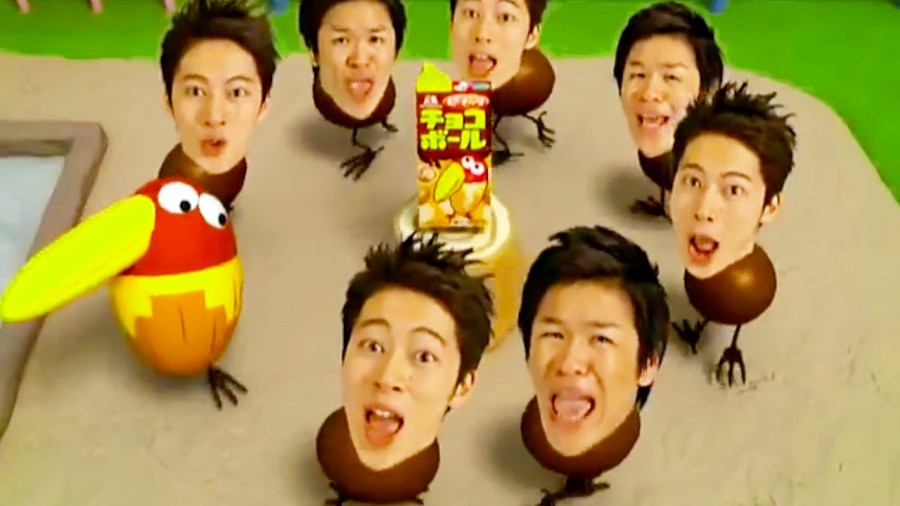
Japanese commercials
According to a long research on several Japanese TV channels, we came to the conclusion that Japanese commercials have the following characteristics:
- A smile to express happiness and satisfaction with a particular product and service;
- Close-ups of women, especially actresses, singing idols, movie stars and TV talent, often appear instead of information about the content and effectiveness of the product;
- Gestos freqüentemente aparecem como meios de comunicação eficazes;
- "Soft sell" as opposed to "hard sell" approaches - are common;
- Inconsistency between the visual image and the product or service;
- Aparência mais freqüente de personalidades da TV;
- Usando animais treinados, belezas, crianças;
- Freqüente aparece estrangeiros, especialmente caucasianos;
- Uso de música para melhorar a imagem;
- Frequent use of concepts in which tradition and modernity combine to produce a beautiful contrast;
- O uso de línguas estrangeiras, especialmente o inglês;
- Uso freqüente de trocadilhos;
- The concept of "family" is often a central concept in advertising;
- Anúncios de serviço público são raros;
- Anúncios comparativos ou de desafios são raros;
- A publicidade de bebidas alcoólicas e tabaco são comuns;
- O aparecimento freqüente de mini-dramas ou histórias em comerciais;
- Except for discount stores, supermarkets and junk foods, the appearance of prices is rare;
- Redução do tempo de transmissão comercial; 15 ou 30 segundos é comum;
We can see the huge contrast between Japanese TV commercials and Westerners. The price of things isn't used much, the commercials are shorter, they usually don't have much to do with the product, focusing more on the story and the people on TV.
The Japanese use little speech to promote the products, focusing more on expressions and events around the commercial. Generally facial expressions are used as anger, bewilderment, contempt, determination, interest, happiness and sadness.
Of course, some things may have changed over the decades, but I personally believe it's the same thing. What do you think of this contrast between Japanese and Western television? We want to hear your comments at the end of the article.
If you want to know more about this study, look for the study by Koji Akiyama from the University of Yamanashi. You can find a PDF in English talking in detail about these features.
Youtube Channels with Japanese Commercials
There are channels on youtube and some websites that are responsible for posting new videos and commercials from Japanese TV every week. Let's leave the channel link and some videos below:
- JPCMHD Channel (Always new videos)
- Videos Tumblr
- Japan commercials (some random channel)





